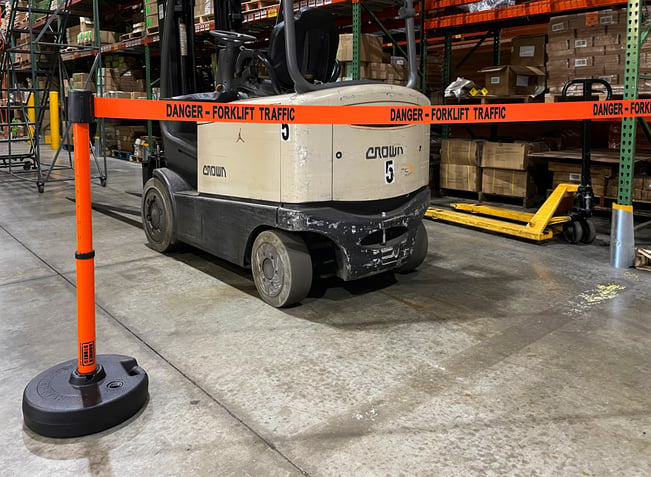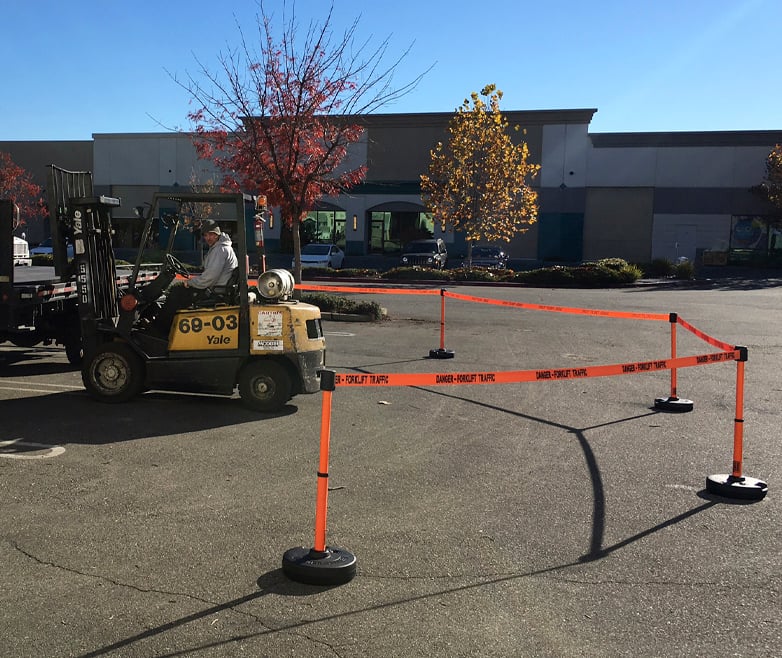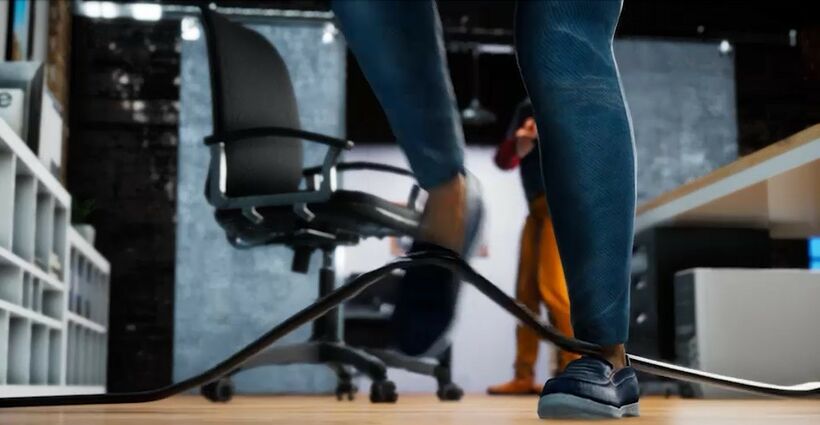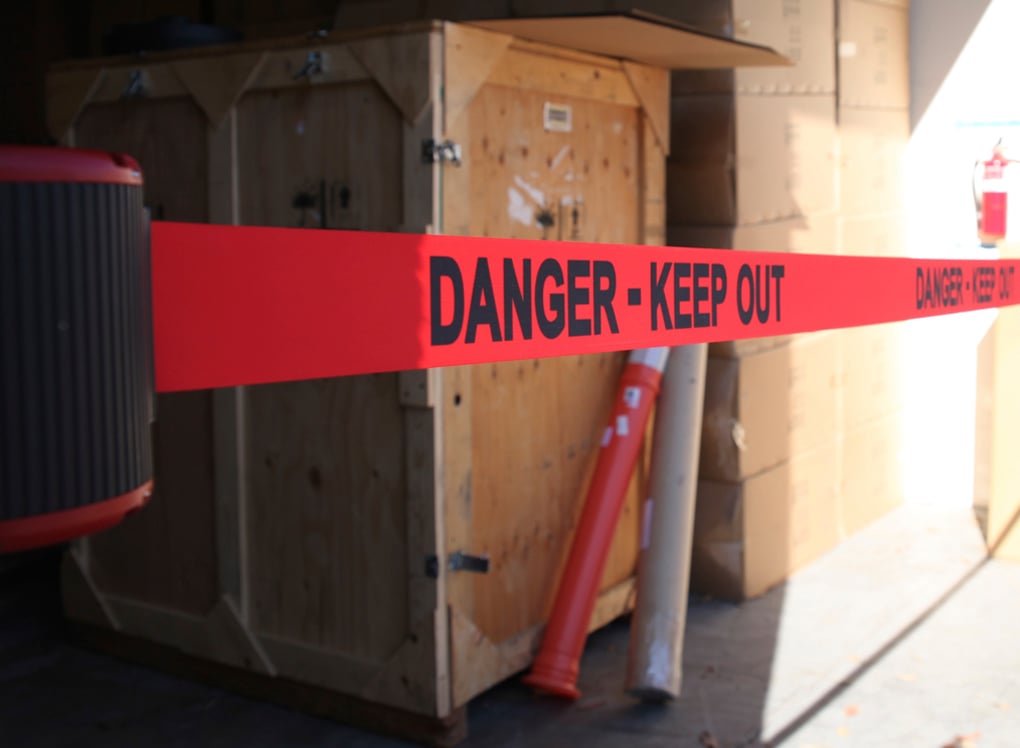Forklifts help increase a warehouse’s productivity by making transporting large, heavy loads relatively easy and fast. Many types of facilities rely on forklifts daily; from grocery stores and warehouses, to construction sites, event venues, airports and more.
Considering how common forklifts are, it’s important to be aware of the many risks associated with them. These are high risk machines despite their wide-spread use. OSHA estimates there were roughly 35,000 forklift-related work injuries last year, and forklift-related accidents routinely make OSHA's Top 10 Violations List year-after-year.
To play it safe and follow these tips at your facility to help avoid forklift related injuries or worse:
1. All forklift drivers should be certified
It all starts with education. Most forklift accidents can be avoided with the proper training and knowledge. Only trained drivers should operate a forklift and other similar heavy machinery such as front end loaders, trucks, and switch engines. Operating a forklift is not interchangeable with driving a car; the two are very different and require different instruction and certification. Being certified to drive a forklift this isn't a one and done process either. Much like having your driver's license renewed yearly, employers should regularly evaluate an employee’s forklift driving, (at least every three years), and supplement training when necessary.
2. Proper attire and gear is key
Safety shoes, hard hats, and a high-visibility vest should always be worn when operating a forklift. Loose clothing should be tucked in to prevent it from getting caught.
3. Forklifts aren't toys
Anyone who isn’t certified should not be riding on a forklift for fun or any other reason, nor should anyone other than the operator be on the forklift unless a secondary seat has been properly fitted. The forklift should not be used to lift up anyone either!
4. Never go beyond the load capacity
Different forklift models have different load capacities and different structures, speeds, turning radiuses, and usage. It’s paramount to know the specifics for safety.
5. Routine inspections and maintenance are important
To ensure that your forklift, or forklifts, are functioning properly they need to be inspected daily. Operational controls should be tested, the mast and overhead should be checked for damage, tire and fluid levels should be checked, as should the forks themselves. It's also important to look for any leaks.
6. Create a floor pathway and use safety barriers
Clearly designate lanes and pathways for forklifts and use high-visibility signs, tape, or retractable belt barrier to mark any general hazards. This will improve overall traffic flow and make pedestrians more aware that forklifts are in use in the area.

(Pictured Above: Highly visible belt barriers can help warn pedestrians that forklifts are in use.)
7. All loads must be stable and secure
Make sure every load is balanced and properly secured prior to moving on the forklift. All loads should be tilted backwards and the forks should be kept as low as possible when traveling.
8. Forklift operators should maintain a heightened sense of awareness
Many accidents can be prevented by employees just being more aware of their surroundings. Forklifts should never be operated in close proximity to other heavy machinery unless absolutely necessary and a safe operating distance should always be kept from other individuals and objects.
9. Only refuel, recharge, and park forklift in designated areas
Refuel and recharge a forklift at the end of every shift or as needed and should always be done in a designated area that is well ventilated and far from any flames.
Forklifts should be parked in the same location at the end of every shift to ensure all pathways are not blocked or obstructed. The forks should be fully lowered and the parking break should be applied with the key removed from ignition.
10. Avoid trailer creep
Trailer creep is a separation that slowly occurs between the back of a truck trailer and the warehouse dock created by the motion of a forklift entering and exiting the trailer repeatedly. The driver of the forklift may not be aware that there is a growing gap as it is easy to misgauge the distance from the loading dock edge in a forklift. This can result in a very serious accident, such as the forklift falling over the edge of the dock.
Tips to avoid trailer creep:
- Paint the dock edge a reflective yellow to provide a better view of the dock
- Use bright neon tape along the dock's edge to help the driver see the edge
- Use protective barriers, bollards, or retractable belt barriers along the edge as a visible or physical cue that the driver is near the edge
- Ensure the lighting is bright so drivers can see well
- Have one worker remain outside of the forklift to spot any gaps
- Install wheel chocks or a rear impact guard

Banner Stakes offers highly visible, OSHA-compliant forklift warning barriers.
If you have any questions about where to start with a forklift safety program, feel free to contact us for more information on our forklift products and services. We also offer a free safety consultation that can give you a better idea if your facility is up to current OSHA safety standards.
Contact Us today and see how we can help make your workplace more safe!


